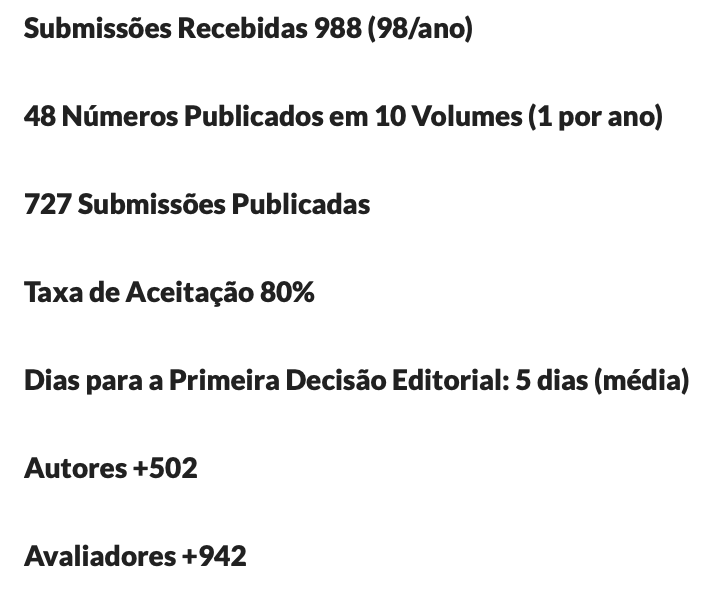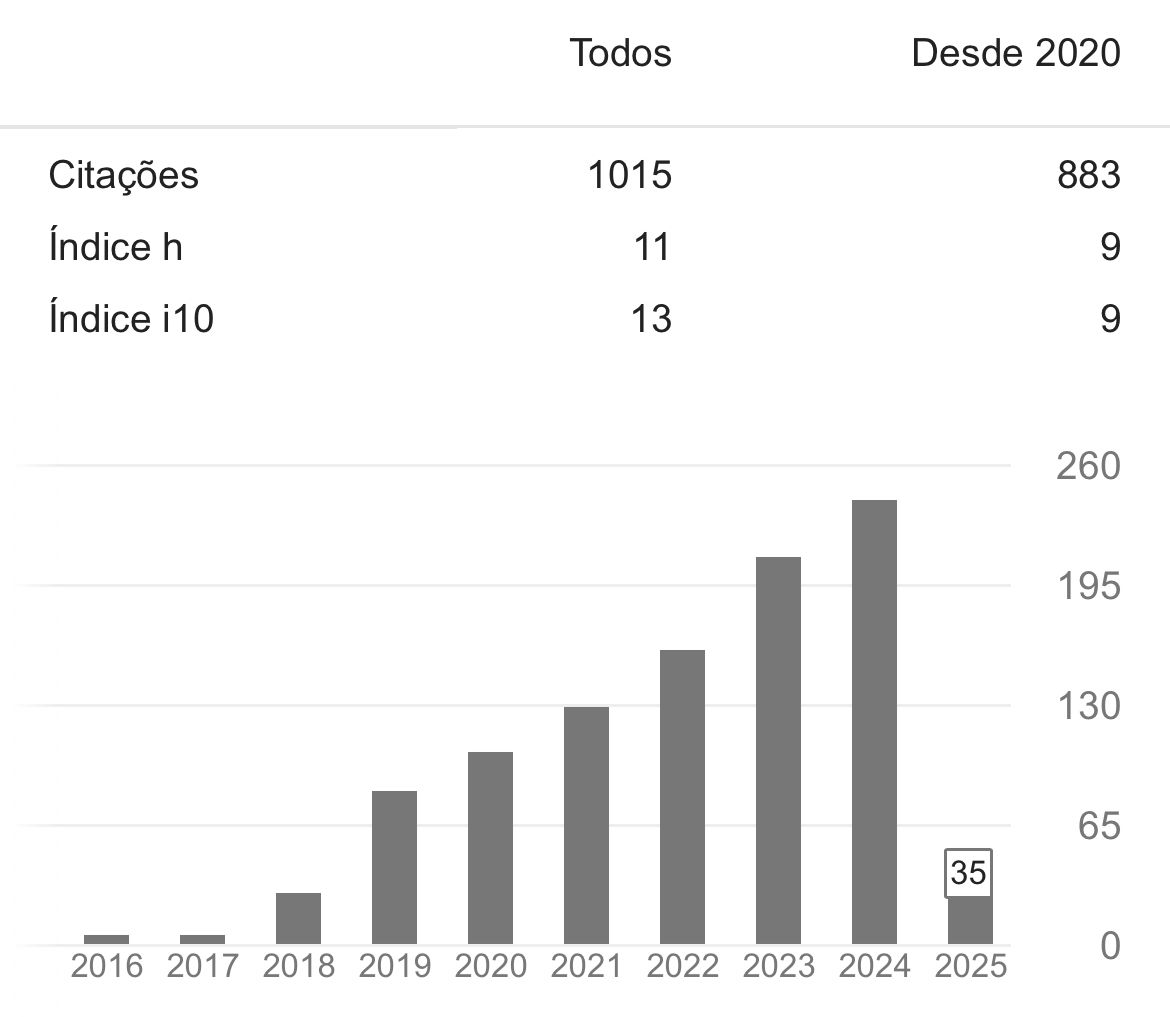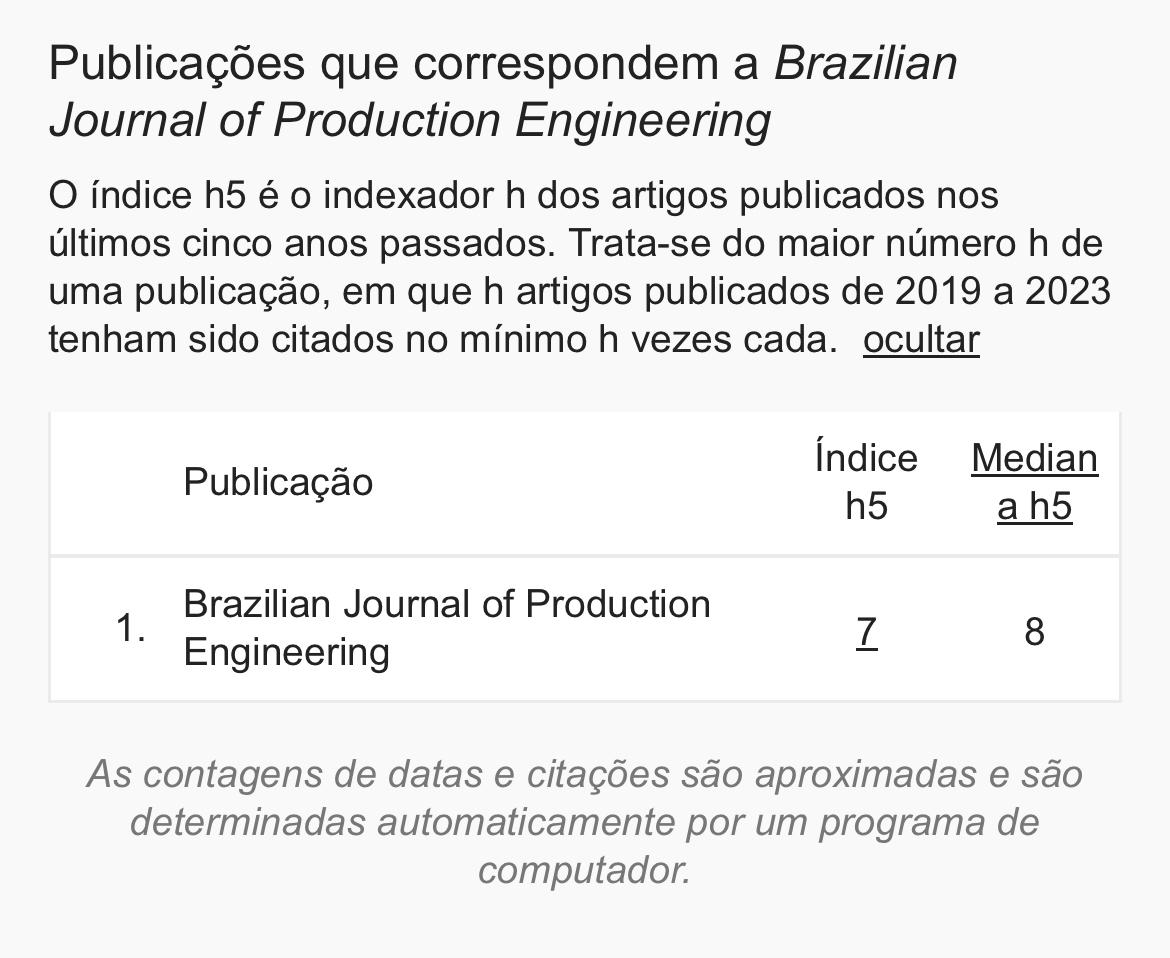Peixes e pesca na bacia do rio Doce, uma análise bibliométrica
DOI:
https://doi.org/10.47456/bjpe.v6i8.33769Palavras-chave:
Biodiversidade, impactos ambientais, bibliometriaResumo
A Bacia do Rio Doce é reconhecida como hotspot para conservação com elevada diversidade biológica e sociocultural. A região ficou marcada pelo rompimento da barragem do Fundão, em 2015. Nesse contexto, realizou-se avaliação bibliométrica das publicações na Bacia do Rio Doce, desde 1969 a julho de 2020, verificando as mudanças ocorridas, principais áreas estudas e lacunas de conhecimento. A análise da Bacia do Rio Doce foi feita de forma quantitativa, enquanto a análise das publicações referentes à ictiofauna e pesca foi realizada de forma qualitativa. Os resultados mostram a mudança de foco entre as pesquisas realizadas na Bacia do Rio Doce, após o rompimento da barragem. Em relação a ictiofauna, evidencia-se o grande número de espécies descobertas no alto e médio rio Doce, bem como o impacto da introdução de espécies exóticas, em contraste com escassas pesquisas sobre a atividade pesqueira. Inversamente, nos sistemas costeiros e estuarinos, há pesquisas sobre atividades pesqueiras, em contraponto com o baixo número de pesquisas sobre diversidade da ictiofauna. Há consenso sobre a gravidade do dano causado pelo rompimento da barragem do Fundão, conforme os estudos relativos à contaminação revelam os efeitos danosos à ictiofauna em toda a extensão da Bacia do Rio Doce, bem como nos sistemas costeiros e estuarinos. Por fim, o impacto sobre a pesca é apontado ligado à contaminação, proibição de pesca, desvalorização do pescado, dificuldade de reparação e reconhecimento do dano causado. Fatores agravados pelas baixas condições sociais, falta de infraestrutura, e baixo investimento na pesca artesanal em detrimento de grandes obras.
Downloads
Referências
Alves, C. B. M., Vono, V., & Vieira, F. (1999). Presence of the walking catfish Clarias gariepinus (Burchell) (Siluriformes, Clariidae) in Minas Gerais state hydrographie basins, Brazil. Revista Brasileira de Zoologia, 16(1), 259–263.
Barbetta, P. A. (2007). Estatística Aplicada Às Ciências Sociais (7a Edição.). Florianópolis: UFSC.
Barros, Lucas C., Santos, U., Zanuncio, J. C., & Dergam, J. A. (2012). Plagioscion squamosissimus (Sciaenidae) and Parachromis managuensis (Cichlidae): A threat to native fishes of the Doce River in Minas Gerais, Brazil. PLoS ONE, 7(6), 1–5.
de Barros, Lucas Caetano, Santos, U., Cioffi, M. D. B., & Dergam, J. A. (2015). Evolutionary divergence among Oligosarcus spp. (Ostariophysi, Characidae) from the São Francisco and Doce River Basins: Oligosarcus solitarius Menezes, 1987 shows the highest rates of chromosomal evolution in the Neotropical Region. Zebrafish, 12(1), 102–110.
Bartolini, M., Bottani, E., & Eric, H. (2019). Green warehousing: Systematic literature review and bibliometric analysis. Journal of Cleaner Production, 226, 242–258.
Belei, F., Ferreira, S. R., Perin, L. M., Braga, F. R., Sampaio, W. M. S., Araújo, J. V. de, Dergam, J. A., et al. (2013). First report of austrodiplostomum compactum and ithyoclinostomum dimorphum in trahira (Hoplias malabaricus) from the middle course of the Rio Doce, Minas Gerais, Brazil. Arquivos do Instituto Biológico, 80(2), 249–252.
Bezerra-Neto, J. F., Brighenti, L. S., Mello, N. A. S. T. de, & Pinto-Coelho, R. M. (2012). Hydroacoustic assessment of fish and Chaoborus (Diptera-Chaoboridae) distribution in three Neotropical lakes. Acta Limnologica Brasiliensia, 24(1), 18–28.
Bonecker, A. C. T., Castro, M. S. d., Costa, P. G., Bianchini, A., & Bonecker, S. L. C. (2019). Larval fish assemblages of the coastal area affected by the tailings of the collapsed dam in southeast Brazil. Regional Studies in Marine Science, 32, 100848. Elsevier B.V. Retrieved from https://doi.org/10.1016/j.rsma.2019.100848
Born, G. G., & Bertollo, L. A. C. (2000). An XX/XY sex chromosome system in a fish species, Hoplias malabaricus, with a polymorphic NOR-bearing X chromosome. Chromosome Research, 8, 111–118.
Bourguignon, S. N., Bastos, A. C., Quaresma, V. S., Vieira, F. V., Pinheiro, H., Amado-Filho, G. M., De Moura, R. L., et al. (2018). Seabed morphology and sedimentary regimes defining fishing grounds along the eastern Brazilian shelf. Geosciences (Switzerland), 8(3). Retrieved from https://www.mdpi.com/2076-3263/8/3/91
Brasil, M. da A. e P. (2020). SisRGP. Retrieved July 17, 2020, from http://sistemasweb.agricultura.gov.br/pages/SISRGP.html
Brasil, M. da J. (2020). FUNAI Geoprocessamento. Retrieved July 16, 2020, from http://www.funai.gov.br/index.php/shape
Brasil, M. do M. A. (2020). ICMBio Cadastro de Unidades de Conservação. Retrieved July 15, 2020, from https://www.mma.gov.br/areas-protegidas/cadastro-nacional-de-ucs/dados-georreferenciados.html
Carvalho, F. R., Sarmento-Soares, L. M., & Martins-Pinheiro, R. F. (2014). Redescription of Moenkhausia doceana (Steindachner, 1877) (Ostariophysi: Characiformes): A characid from the Northeastern Mata Atlântica ecoregion, Brazil. Neotropical Ichthyology, 12(2), 377–388.
Coppo, G. C., Passos, L. S., Lopes, T. O. M., Pereira, T. M., Merçon, J., Cabral, D. S., Barbosa, B. V., et al. (2018). Genotoxic, biochemical and bioconcentration effects of manganese on Oreochromis niloticus (Cichlidae). Ecotoxicology, 27(8), 1150–1160. Springer US. Retrieved from http://dx.doi.org/10.1007/s10646-018-1970-0
Da Cunha, M. S., Reis, V. J. C., & Dergam, J. A. (2016). Closely Related Syntopic Cytotypes of Astyanax taeniatus (Jenyns, 1842) from the Upper Piranga River, Upper Doce Basin in Southeastern Brazil. Zebrafish, 13(2), 112–117.
Dergam, J. A., Paiva, S. R., Schaeffer, C. E., Godinho, A. L., & Vieira, F. (2002). Phylogeography and RAPD-PCR variation in Hoplias malabaricus (Bloch, 1794) (Pisces, Teleostei) in southeastern Brazil. Genetics and Molecular Biology, 25(4), 379–387.
Dupont, W. D., & Plummer, W. D. (1990). Power and sample size calculations. Controlled Clinical Trials, 11(2), 116–128. Retrieved from https://linkinghub.elsevier.com/retrieve/pii/019724569090005M
Eckert, A. (2016). Antecedentes da intenção de recompra dos consumidores no contexto de compras On-Line. Universidade de Caxias do Sul.
Fragoso-Moura, E. N., Oporto, L. T., Maia-Barbosa, P. M., & Barbosa, F. A. R. (2016). Loss of biodiversity in a conservation unit of the Brazilian Atlantic Forest: the effect of introducing non-native fish species. Brazilian Journal of Biology, 76(1), 18–27.
Galvão, T. F., Pansani, T. de S. A., & Harrad, D. (2015). Principais itens para relatar Revisões sistemáticas e Meta-análises: A recomendação PRISMA. Epidemiologia e Serviços de Saúde, 24(2), 335–342.
Garavello, J. C., & Britski, H. A. (2003). Parotocinclus planicauda, a new species of the subfamily Hypoptopomatinae from southeastern Brazil (Ostariophysi: Loricariidae). Brazilian journal of biology - Revista brasleira de biologia, 63(2), 253–260.
Giacomini, H. C., Lima, D. P., Latini, A. O., & Espírito-Santo, H. M. V. (2011). Spatio-temporal segregation and size distribution of fish assemblages as related to non-native species occurrence in the middle rio doce valley, MG, Brazil. Neotropical Ichthyology, 9(1), 135–146.
Gomes, V. A. do P., & Freitas, R. R. de. (2018). Índice de potencialidade socioeconômica, produtiva e ambiental de comunidades pesqueiras situadas no norte do Estado do Espírito Santo (IPSPA - Norte). Revista Produção Online, 18(1), 36–62.
Gomiero, L. M. (2010). Métodos de Coleta Utilizados na Captura de Tucunarés (Cichla spp.) PARA FINS CIENTÍFICOS. Revista Brasileira de Engenharia de Pesca, 5(1), 1–13.
Hobbs, D., Bigot, M., & Smith, R. (2020). Rio Doce Acoustic Surveys of Fish Biomass and Aquatic Habitat. Integrated Environmental Assessment and Management, 00(00), 1–7.
IBGE, I. B. de G. e E. (2020). IBGE Cidades. IBGE Cidades. Retrieved July 17, 2020, from https://cidades.ibge.gov.br/
Knox, W., & Trigueiro, A. (2014). A pesca artesanal, conflitos e novas configurações REDD-Revista Espaço de Diálogo e Desconexão, Araraquara, v.8, n.1 e 2. 2014 A Pesca Artesanal, Conflitos e Novas Configurações. REDD – Revista Espaço de Diálogo e Desconexão, 8(1).
Lemos, L. M. P. (2016). Nuvem de tags como ferramenta de análise de conteúdo: uma experiência com as cenas estendidas da telenovela Passione na internet. Lumina, 10(1), 1–18.
Lima, A. T., Bastos, F. A., Junior, F. J. T., Neto, R. R., Gomes, H. I., & Barroso, G. F. (2021). Doce River Large-Scale Environmental Catastrophe: Decision and Policy-Making Outcomes. Environment and development: Challenges, policies and practices (pp. 133–173). Cham: Springer International Publishing. Retrieved from http://link.springer.com/10.1007/978-3-030-55416-3_5
Lima, A. T., Bastos, F. A., Teubner, F. J., Neto, R. R., Cooper, A., & Barroso, G. F. (2020). Strengths and Weaknesses of a Hybrid Post-disaster Management Approach: the Doce River (Brazil) Mine-Tailing Dam Burst. Environmental Management, 65(6), 711–724. Retrieved from http://link.springer.com/10.1007/s00267-020-01279-4
Lima, F. P., Latini, A. O., De Marco, P., & Júnior, P. D. M. (2010). How are the lakes? Environmental perception by fishermen and alien fish dispersal in Brazilian tropical lakes. Interciencia, 35(2), 84–91.
Lopes, C. A., Araujo, N. L. F., Rocha, L., Monteiro, F., Rocha, R. C. C., Saint’Pierre, T. D., Lutfi, D. S., et al. (2019). Toxic and essential metals in Narcine brasiliensis (Elasmobranchii: Narcinidae): A baseline ecotoxicological study in the Southeast Atlantic and preliminary maternal transfer implications. Marine Pollution Bulletin, 149(April), 110606. Elsevier. Retrieved from https://doi.org/10.1016/j.marpolbul.2019.110606
Losekann, C. (2017). “It Was No Accident!” the Place of Emotions in the Mobilization of People Affected By the Collapse of Samarco’S Tailings Dam in Brazil. Vibrant: Virtual Brazilian Anthropology, 14(2), 1–25.
Lucinda, P. H. F. (2008). Systematics and biogeography of the genus Phalloceros Eigenmann, 1907 (Cyprinodontiformes: Poeciliidae: Poeciliinae), with the description of twenty-one new species. Neotropical Ichthyology, 6(2), 113–158.
Macêdo, A. K. S., Santos, K. P. E. dos, Brighenti, L. S., Windmöller, C. C., Barbosa, F. A. R., Ribeiro, R. I. M. de A., Santos, H. B. dos, et al. (2020). Histological and molecular changes in gill and liver of fish (Astyanax lacustris Lütken, 1875) exposed to water from the Doce basin after the rupture of a mining tailings dam in Mariana, MG, Brazil. Science of the Total Environment, 735.
Malanski, E., Sarmento-Soares, L. M., Silva-Malanski, A. C. G., Lopes, M. M., Ingenito, L. F. da S., & Buckup, P. A. (2019). A new species of Characidium (Characiformes: Crenuchidae) from coastal basins in the Atlantic Rainforest of eastern Brazil, with phylogenetic and phylogeographic insights into the Characidium alipioi species group. Neotropical Ichthyology, 17(2), 1–13.
Marchese, C. (2015). Biodiversity hotspots: A shortcut for a more complicated concept. Global Ecology and Conservation, 3, 297–309. Elsevier B.V. Retrieved from http://dx.doi.org/10.1016/j.gecco.2014.12.008
Martins, F. O., & Langeani, F. (2016). Redescription of Hisonotus notatus Eigenmann & Eigenmann, 1889 (Loricariidae: Hypoptopomatinae), The type species of the genus, and description of a new species from coastal drainages of southeastern Brazil. Neotropical Ichthyology, 14(2), 1–18.
Matthews-Cascon, H., Bezerra, L. E. A., Barroso, C. X., Rabay, S. G., Moreira, A. K., Rocha, V. P., & Soares, M. de O. (2018). Marine benthic communities affected by the Doce River (southwestern Atlantic): Baseline before a mining disaster. Marine Pollution Bulletin, 135.
Merigó, J. M., Pedrycz, W., Weber, R., & de la Sotta, C. (2018). Fifty years of Information Sciences: A bibliometric overview. Information Sciences, 432, 245–268.
Mishra, D., Gunasekaran, A., Papadopoulos, T., & Childe, S. J. (2016). Big Data and supply chain management: a review and bibliometric analysis. Annals of Operations Research, 270(1–2), 313–336.
Myers, N., Mittermeier, R. a, Mittermeier, C. G., da Fonseca, G. a, & Kent, J. (2000). Biodiversity hotspots for conservation priorities. Nature, 403(6772), 853–8. Retrieved from http://www.ncbi.nlm.nih.gov/pubmed/10706275
Oliveira, J. C., & Oyakawa, O. T. (2019). New loricariid fishes from headwaters on Serra da Mantiqueira and Complexo do Espinhaço, Minas Gerais State, Brazil (teleostei: Siluriformes: Loricariidae). Zootaxa, 4586(3), 401–424.
Oliveira, P. D. C., Di Beneditto, A. P. M., Quaresma, V. da S., Bastos, A. C., & Zappes, C. A. (2020). Traditional knowledge of Fishers versus an environmental disaster from mining waste in Central Brazil. Marine Policy, 120, 104129. Retrieved from http://www.sciencedirect.com/science/article/pii/S0308597X20301585
Ottoni, F. P. (2010). Australoheros capixaba, a new species of Australoheros from south-eastern Brazil (Labroidei: Cichlidae: Cichlasomatinae). Vertebrate Zoology, 60(1), 19–25. Retrieved from http://cichlidae.us/wp-content/uploads/pdf/Australoheros capixaba.pdf
Oyakawa, O. T., & Mattox, G. M. T. (2009). Revision of the Neotropical trahiras of the Hoplias lacerdae species-group (Ostariophysi: Characiformes: Erythrinidae) with descriptions of two new species. Neotropical Ichthyology, 7(2), 117–140.
Paiva, S. R., Dergam, J. A., & Machado, F. (2006). Determining management units in southeastern Brazil: The case of Astyanax bimaculatus (Linnaeus, 1758) (Teleostei: Ostariophysi: Characidae). Hydrobiologia, 560(1), 393–404.
Passos, L. S., Gnocchi, K. G., Pereira, T. M., Coppo, G. C., Cabral, D. S., & Gomes, L. C. (2020). Is the Doce River elutriate or its water toxic to Astyanax lacustris (Teleostei: Characidae) three years after the Samarco mining dam collapse? Science of the Total Environment, 736.
Pereira, E. H. L., & Britto, M. R. (2012). A New Distinctively Colored Catfish of the Genus Pareiorhaphis (Siluriformes: Loricariidae) from the Rio Piracicaba, Upper Rio Doce Basin, Brazil. Copeia, (3), 519–526.
Pereira, E. H. L., Pablo, L. A., & Reis, R. E. (2012). A new species of the neoplecostomine catfish Pareiorhaphis (Siluriformes: Loricariidae) from the coastal basins of Espírito Santo, eastern Brazil. Neotropical Ichthyology, 10(3), 539–546.
Pereira, E. H. L., Vieira, F., & Reis, R. E. (2007). A new species of sexually dimorphic Pareiorhaphis Miranda Ribeiro, 1918 (Siluriformes: Loricariidae) from the rio Doce basin, Brazil. Neotropical Ichthyology, 5(4), 443–448.
Pereira, E. H. L., Vieira, F., & Reis, R. E. (2010). Pareiorhaphis scutula, a new species of neoplecostomine catfish (Siluriformes: Loricariidae) from the upper rio Doce basin, Southeastern Brazil. Neotropical Ichthyology, 8(1), 33–38.
Pinheiro, H. T., & Joyeux, J.-C. (2007). Pescarias multi-específicas na região da foz do Rio Doce, ES, Brasil: características, problemas e opções para um futuro sustentável. Brazilian Journal of Aquatic Science and Technology, 11(2), 15–23.
Pinto-Coelho, R. M., Bezerra-Neto, J. F., Miranda, F., Mota, T. G., Resck, R., Santos, A. M., Maia-Barbosa, P. M., et al. (2008). The inverted trophic cascade in tropical plankton communities: Impacts of exotic fish in the Middle Rio Doce lake district, Minas Gerais, Brazil. Brazilian Journal of Biology, 68(4), 1025–1037.
Reis, V. J. C., de Pinna, M. C. C., & Pessali, T. C. (2019). A new species of Trichomycterus Valenciennes 1832 (Trichomycteridae: Siluriformes) from the Rio Doce drainage with remarkable similarities with Bullockia and a CT-scan survey. Journal of Fish Biology, 95(3), 918–931.
Rocha, K. S., Santos, C. T., & Freitas, R. R. De. (2018). Diagnóstico da Atividade Pesqueira no Espírito Santo, Brasil: um Estudo sobre o Segmento de Peixarias. Revista Brasileira de Engenharia de Pesca, 11(1), 97–112.
Rosa, R. S., & Menezes, N. A. (1996). Relação preliminar das espécies de peixes (Pisces, Elasmobranchii, Actinopterygii) ameaçadas no Brasil. Revista Brasileira de Zoologia, 13(3), 647–667.
Roxo, F. F., Silva, G. S. C., Zawadzki, C. H., & Oliveira, C. (2014). Neoplecostomus doceensis: A new loricariid species (Teleostei, Siluriformes) from the rio doce basin and comments about its putative origin. ZooKeys, 440, 115–127.
Salvador, G. N., Frederico, R. G., Pessali, T. C., Vieira, F., & Freitas, T. M. S. (2018). Length-weight relationship of 21 fish species from Rio Doce River basin, Minas Gerais, Brazil. Journal of Applied Ichthyology, 34, 1198–1201.
Santos, O., & Castro, R. M. C. (2014). Taxonomy of Probolodus Eigenmann, 1911 (Characiformes: Characidae) with description of two new species, and comments about the phylogenetic relationships and biogeography of the genus. Neotropical Ichthyology, 12(2), 403–418.
Sarmento-Soares, L. M., & Martins-Pinheiro, R. F. (2013). Glanidium botocudo, a new species from the rio Doce and rio Mucuri, Minas Gerais, Brazil (Siluriformes: Auchenipteridae) with comments on taxonomic position of Glanidium bockmanni Sarmento-Soares & Buckup. Neotropical Ichthyology, 11(2), 265–274.
Silva, P. C., Malabarba, M. C., & Malabarba, L. R. (2017). Using ancient DNA to unravel taxonomic puzzles: The identity of Deuterodon pedri (Ostariophysi: Characidae). Neotropical Ichthyology, 15(1), 1–12.
Silva, P. C., Santos, U., Travenzoli, N. M., Zanuncio, J. C., de Cioffi, M. B., & Dergam, J. A. (2012). The unique karyotype of Henochilus wheatlandii, a critically endangered fish living in a fast-developing region in Minas Gerais State, Brazil. PLoS ONE, 7(7), 1–5.
Teixeira, J. B., Lima, A. C., Boechat, F. P., Rodrigues, R. L., & Freitas, R. R. (2012). Potencialidade social e econômica da pesca e maricultura no Estado do Espírito Santo, Brasil. Revista de Gestão Costeira Integrada, 12(4), 569–575.
Trindade-Santos, I., Eduardo, A. A., Moyes, F., Martinez, P. A., Magurran, A. E., & Gouveia, S. F. (2018). Simulating shifts in taxonomic and functional β-diversity of ray-finned fishes: Probing the Mariana disaster. Perspectives in Ecology and Conservation, 16(4), 186–192. Associação Brasileira de Ciência Ecológica e Conservação. Retrieved from https://doi.org/10.1016/j.pecon.2018.09.002
Urquiza, A. H. A., & Rocha, A. de O. (2019). O Desastre Ambiental de Mariana e os Krenak do Rio Doce. Veredas dos Direito, 16(35), 191–218.
Viana, J. P. (2017). Os pescadores da bacia do Rio Doce: subsídios para a mitigação dos impactos socioambientais do desastre da Samarco em Mariana, Minas Gerais. Boletim regional, urbano e ambiental, (16), 1–51. Retrieved from http://www.ipea.gov.br
Vono, V., & Barbosa, F. A. R. (2001). Habitats and littoral zone fish community structure of two natural lakes in southeast Brazil. Environmental Biology of Fishes, 61(4), 371–379.
Weber, A. A., Sales, C. F., de Souza Faria, F., Melo, R. M. C., Bazzoli, N., & Rizzo, E. (2020). Effects of metal contamination on liver in two fish species from a highly impacted neotropical river: A case study of the Fundão dam, Brazil. Ecotoxicology and Environmental Safety, 190(October 2019).
Downloads
Publicado
Como Citar
Edição
Seção
Licença
Copyright (c) 2021 Brazilian Journal of Production Engineering - BJPE

Este trabalho está licenciado sob uma licença Creative Commons Attribution-NonCommercial-ShareAlike 4.0 International License.

Atribuição 4.0 internacional CC BY 4.0 Deed
Esta licença permite que outros remixem, adaptem e desenvolvam seu trabalho não comercialmente, contanto que eles creditem a você e licenciem suas novas criações sob os mesmos termos.
















































































